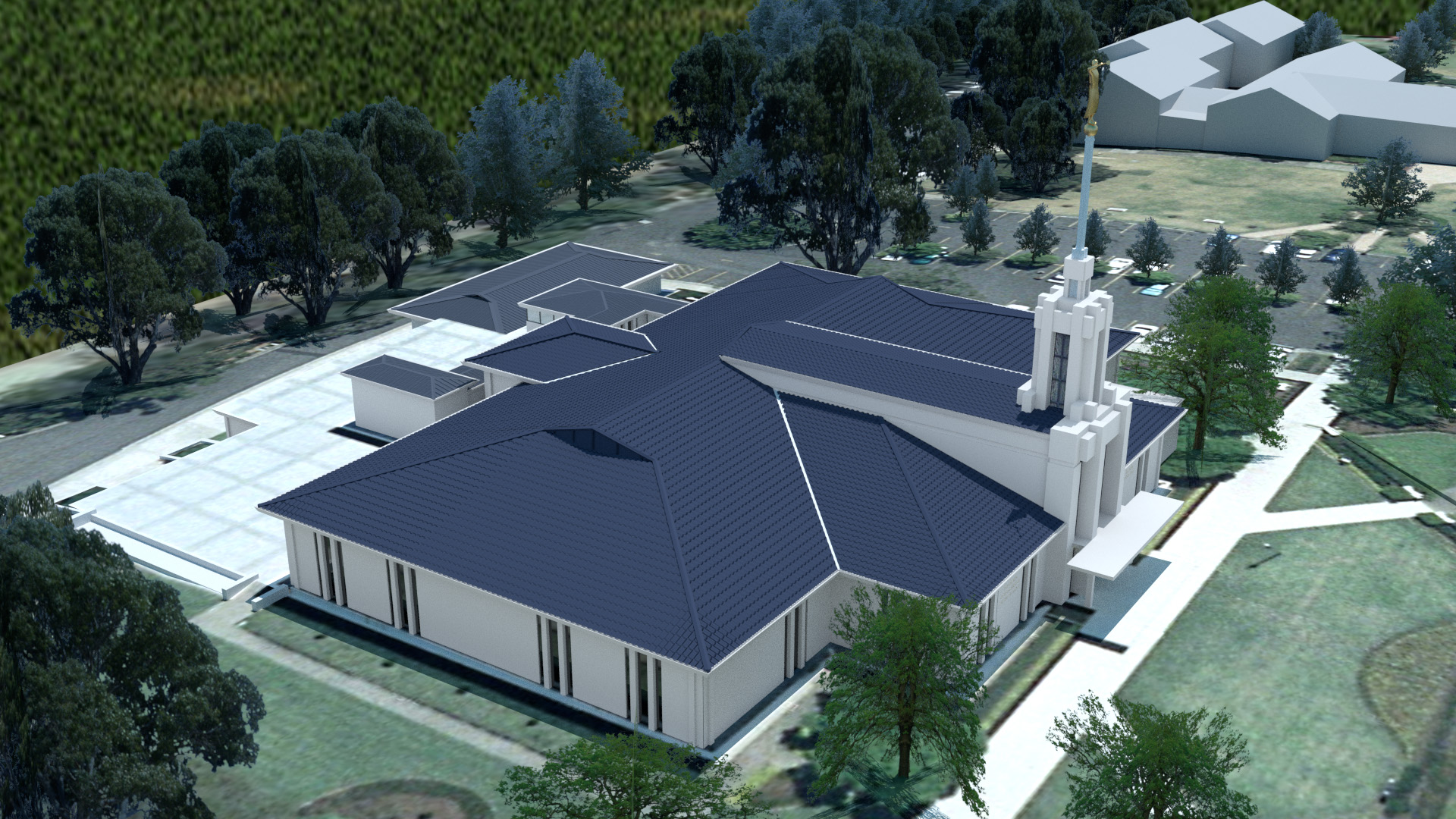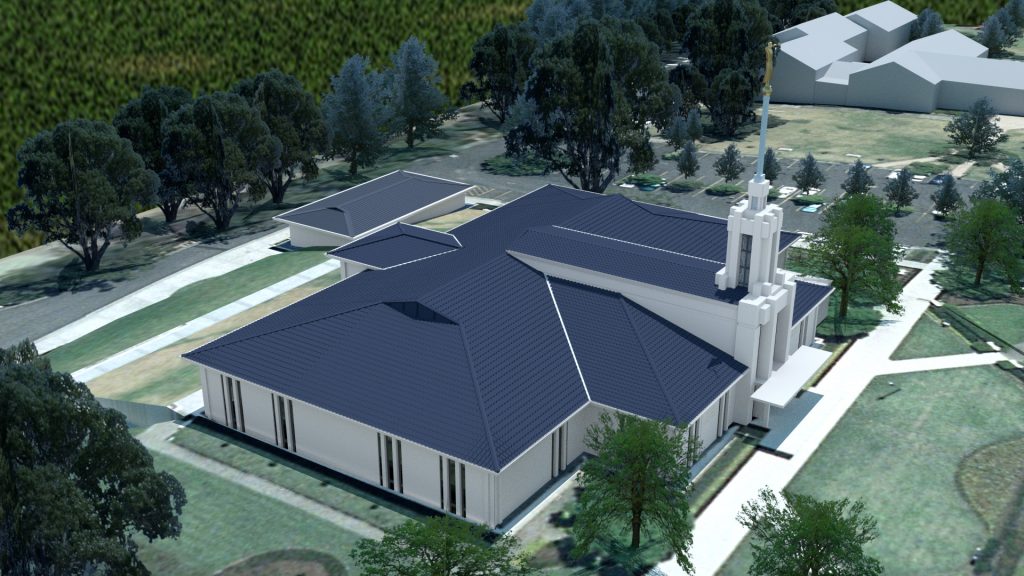
Sydney Australia Temple Wiki
Description
The Sydney Australia Temple is a temple of The Church of Jesus Christ of Latter-day Saints in Carlingford, New South Wales.
The Sydney Australia Temple sits on property formerly used as a school for boys. The buildings were renovated and converted for Church use including area offices. The three-acre lot where the Sydney Australia Temple now stands is known as Temple Hill and is a beloved landmark for the community. Gardeners landscape the grounds with colorful flowers year-round, offering a peaceful place for temple patrons and the public to stroll. The Sydney Australia Temple has won community council beautification awards for its immaculate gardens. Every Christmas season, the grounds become a festive local attraction as thousands come to see magnificent light displays and a life-size Nativity scene, which attest to the Church’s focus on Jesus Christ.
History
For a long time it was believed that the first official missionaries arrived in Australia in 1851, but as early as 1840 missionaries were sent to Australia. William Barrat was one of them. He was called as a missionary in England and then sent to Australia. He baptized Robert Beauchamp in Adelaide. Beuachamp was one of the first members of the Church in the area and later became a mission president. Barrat was still in Australia when news of the murders of Joseph Smith and his brother Hyrum reached Australia in 1845. Newspapers announced that Mormonism would die out; the news must have been hard for the only missionary in Australia. William Barrat eventually married and lived out the remainder of his life in Australia.
In 1841, another member of the Church arrived in Australia—Andrew Anderson. He came from Scotland, where he and his wife and three children had joined the Church. Before he left for Australia, he had been ordained to preach. Anderson’s family farmed just northwest of Sydney and worked hard to preach the gospel. By 1844 he organized the first branch in Australia in Monteflores. When missionaries arrived in Australia from the U.S., Andrew Anderson heard of their arrival and traveled to Sydney. The few people that these first missionaries baptized in Australia did not seem significant at the time, but over time the Church grew because of those who had been converted. Robert Beauchamp alone baptized 150 people, when he was called on a mission in Australia. Today there are more than 70,000 members in Australia.
Announcement
The Sydney Australia Temple was announced on April 2, 1980. A larger regional Temple had previously been announced for American Samoa in Pago Pago, but on April 2 the announcement was made that rather than building one temple convenient to a regional airport, 4 smaller temples would be built closer to where members were concentrated. These new Temples were in Sydney, Apia Samoa, Papeete Tahiti, and Nuku’alofa Tonga.
Groundbreaking
A groundbreaking ceremony and site dedication were held for the Sydney Australia Temple on August 13, 1982. The ceremony and dedication were presided over by Elder Bruce R. McConkie, of the Quorum of the Twelves Apostles—a former mission president of Australia.
At a fireside later that evening, he said,
“There is no reason why we can’t have temples in Adelaide, Melbourne, Brisbane, Perth, or wherever the number of saints justifies it.”
His statement proved prophetic with the construction of the Adelaide Australia Temple, Melbourne Australia Temple, Brisbane Australia Temple, and Perth Australia Temple.
Construction
During construction of the Sydney Australia Temple, numerous workers on the project—most of whom did not belong to the Church—asked questions of Brother Frank Hewstone, the Church’s project representative, about the temple. One worker often turned to many by the time he finished providing his explanations.
Open House
Thousands of Australians toured the Sydney Australia Temple during its public open house 6-18 September 1984, resulting in hundreds of requests for more information about the Church.
Dedication

President Gordon B. Hinckley, then a member of the Church’s First Presidency, dedicated the temple on September 20, 1984. In his dedicatory prayer, he said:
“May this temple with its grounds be a place of beauty to all who look upon it. May they be touched by Thy spirit as they do so, that there may come into their hearts a feeling of respect for Thee and Thy people, and an increase of love for Thee our God.”[1]Sydney Australia Temple dedicatory prayer, in Church News, Sept. 30, 1984, http://www.ldschurchnewsarchive.com/articles/61706/Sydney-Australia-Temple-May-the-people-of-Thy-Church-be-recognized-as-men-and-women-of-integrity-of-industry-and-of-faith.html
Because of a law passed by the local government the Sydney Temple was dedicated without an angel Moroni statue. Members in the area fasted and prayed and a year later the law was removed. On September 3, 1985 the statue was placed on the spire of the temple.
Dedication Order
1991

In the early 1990’s the temple, like the others of its design, was expanded to add a full baptistry with Oxen statues under the font. The expansion on the temple was rededicated 24 November 1991 by Russell M. Nelson, then a member of the Quorum of the Twelve Apostles.
Presidents
| Temple President | Years Served |
|---|---|
| Richard H. Osmotherly | 2018– |
| W. F. Lionel Walters | 2015–2018 |
| Peter R. Barr | 2011–2015 |
| W. John Bailey III | 2008–2011 |
| Frank H. Hewstone | 2005–2008 |
| George Mearns | 2002–2005 |
| P. Bruce Mitchell | 1999–2002 |
| Robert J. Belbin | 1996–1999 |
| Ian G. Mackie | 1993–1996 |
| Donald W. Cummings | 1990–1993 |
| Stanley O. Gray | 1987–1990 |
| Milton J. Hess | 1984–1987 |
Details
The Sydney Australia Temple was designed by Emil B. Fetzer, who oversaw the design of more than 20 temples around the world during his 21-year career as Church architect. The temple’s modern design features one spire and rectangular stained glass windows shining over the main entrance and ascending the spire.
Location
The temple site is 3 acres located just north of Sydney in a suburb called Carlingford, about 12 miles northwest of downtown Sydney. The tranquil setting is considerably beautified by award-winning landscaping including huge eucalyptus trees that perpetuates appealing form and color year round. The temple shares its site with Church area offices and a patron housing facility.
Exterior
The temple’s exterior is made of precast panels with a white quartz finish. the roof of the temple is decorated with 25,000 azure blue roof tiles.
The original designs of the Apia Samoa, Nuku alofa Tonga, Papeete Tahiti, Atlanta Georgia and the Santiago Chile temples all have the same basic design.
Cladding
Windows
Symbolism
Inscriptions
Cornerstone
ERECTED
2xxx
Spires and Moroni
Spire
Moroni
A statue of angel Moroni, coated in gold, stands atop the spire, his raised trumpet a symbol of the restored gospel message spreading over the earth.
Due to a ruling by the local government, the temple was dedicated without a statue of the angel Moroni. The ruling was overturned about a year later, and the statue was hoisted into place atop the spire the next day, 3 September 1985.[2] “LDS Scene”, Ensign, November 1985
Interior
With 30,067 square feet, the temple includes sealing rooms, where marriages are performed; instruction rooms, where patrons learn about Jesus Christ; a baptistry; and a room representing heaven, known as the celestial room.
Rooms
Individuals and Contractors
Sources and Links
Additional Articles
Sources/Citation
References
| ↑1 | Sydney Australia Temple dedicatory prayer, in Church News, Sept. 30, 1984, http://www.ldschurchnewsarchive.com/articles/61706/Sydney-Australia-Temple-May-the-people-of-Thy-Church-be-recognized-as-men-and-women-of-integrity-of-industry-and-of-faith.html |
|---|---|
| ↑2 | “LDS Scene”, Ensign, November 1985 |

Do you have any idea what all the basement-level addition on the back of the Sydney temple contains? I have saw it until finding this page.
Part 2: I see on your page that that basement level addition holds a baptistery, but there’s gotta me more than just that in it. I am just wondering.
The only description I have is from someone who attended the temple as a youth. The old baptistry on this temple was small. The font was a small square in the ground font like you would find at any LDS Chapel. the dressing rooms were tiny. The addition contains the new larger font and font area, larger dressing rooms, a waiting room for the baptistry, (all of that being the majority of the space) as well as mechanical (Heating, Cooling, Plumbing) janitorial and other administrative/storage spaces. If I had to guess, it probably contains the laundry space as well.